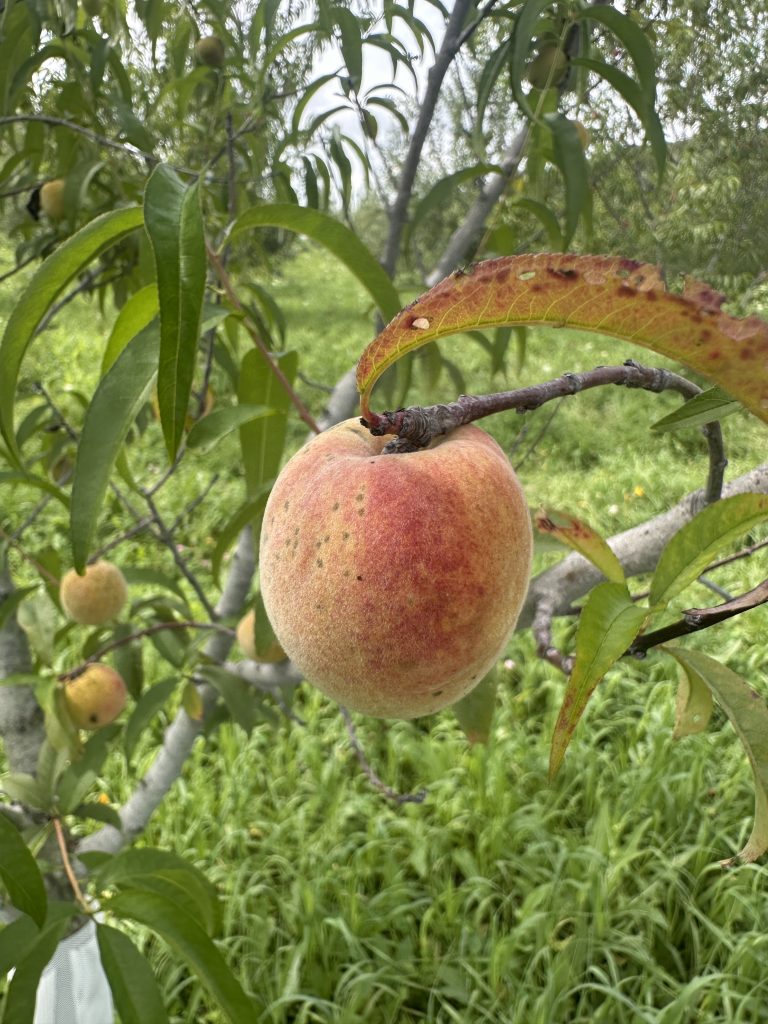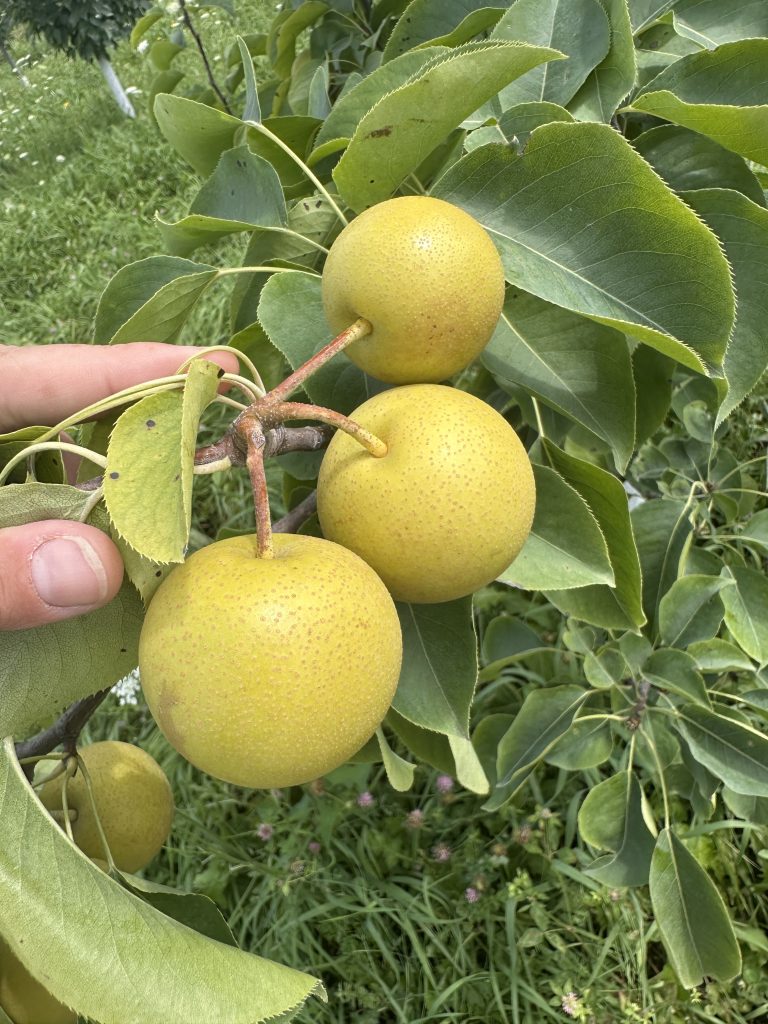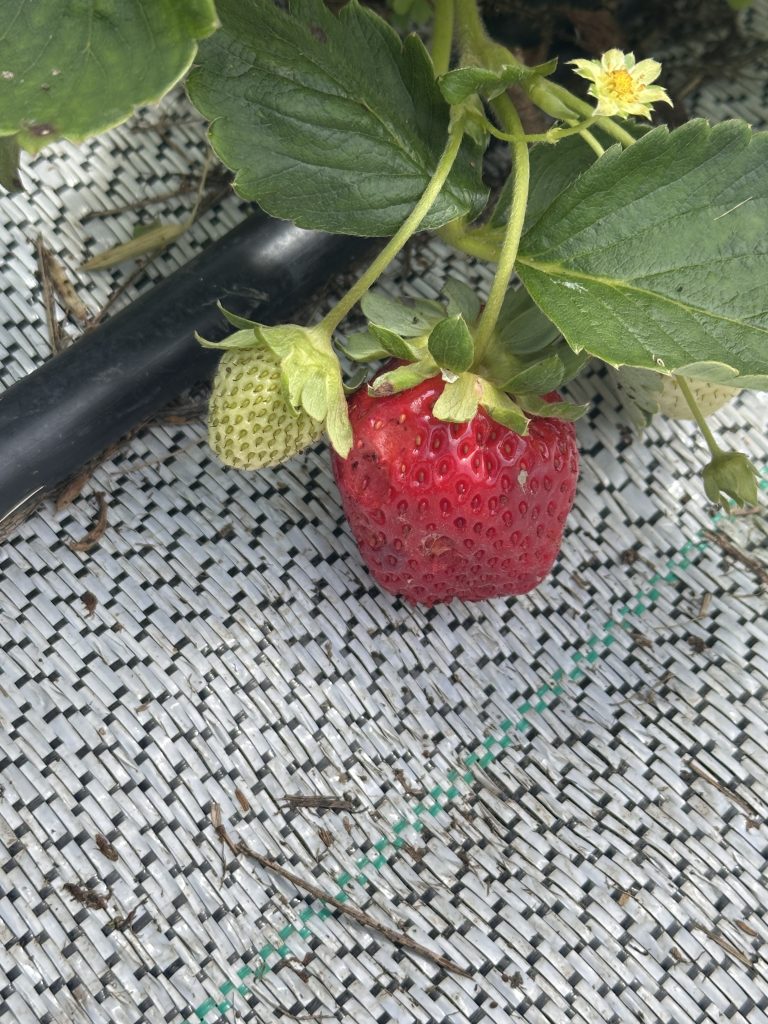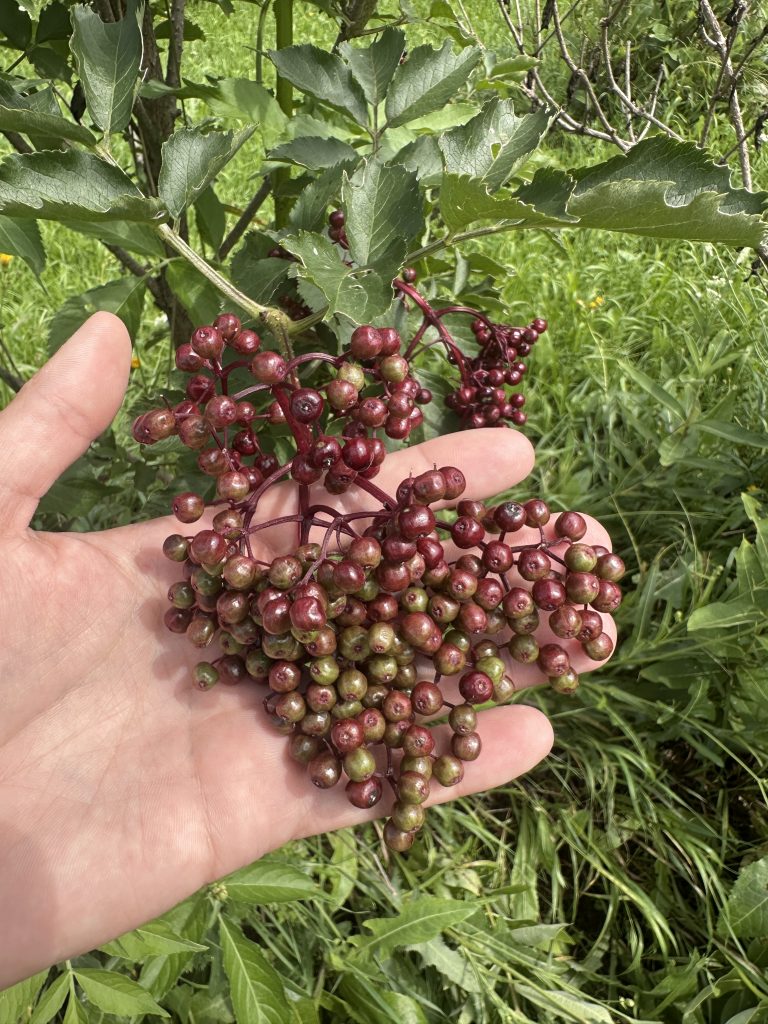Notes from the Field: A Growers Perspective – Ben Kraus Chat #9
Welcome back to our tenth report of 2025 Notes from the Field! As a reminder, this year’s Notes from the Field will follow Ben Kraus with Gwenyn Hill Farm (Waukesha). The goal of this newsletter is to hear from the grower’s perspective and foster connection between fruit growers. We’ll be focusing our discussions on phenology/fruit development and integrated pest management. This week, Ben finished up plum harvest and began picking Reliance peaches. The day neutral strawberries and raspberries are continuing to produce well, though it seems wasps have begun to move in making harvest tricky at times. The elderberries are beginning to ripen and Ben will be picking them soon. The majority of fruit picked are available at Gwenyn Hill’s on-site farm stand. As for pest management, Ben is continuing to monitor for codling moth and apple maggot, and is tackling some defoliation from late-summer leafrollers in the trees, and slugs in the strawberries. He is also keeping an eye on any summer disease development in tree fruit and grapes.
I met with Ben on Monday, August 11th for a walk through the orchard. As a reminder, Gwenyn Hill has a 4-acre block of tree fruit and berries that sits along a north-facing slope, and ~150 table grape vines bordered by saskatoons and rhubarb across the road. Weather over the past ~two weeks (July 28 – August 11) has continued to be hot and humid, with heavy rain this past weekend. Ben recorded about 9” of rain between August 9-11 that flooded a few fields. Luckily, the orchard is planted on a slope and all that remained were a few standing puddles. According to NEWA, over the past two weeks Gwenyn Hill had an average high temperature of 81.1℉, average low temperature of 61.9℉, and a total of 10.05” of precipitation (NEWA – Colgate, WI).
*INSERT FRUIT PHENOLOGY PHOTOS HERE




For disease management, Ben plans to continue using Potassium Bicarbonate and LifeGard WG (Bacillus mycoides isolate J) as needed for summer tree fruit diseases like sooty blotch and flyspeck and bitter rot. Black rot in the table grapes has continued to progress with warm, humid weather and precipitation. Dr. Leslie Holland will be giving a talk on grape black rot at the upcoming Wisconsin Grape Grower Association Field day happening on Thursday, August 21 at Cambridge Winery. The field day runs from 9:00am – 3:00pm, and includes talks on new biopesticides and biostimulants, field research updates, lunch and a wine tasting. For more information and/or if interested in attending, view the agenda and register here: 2025 WGGA Field Day Registration.
Ben is continuing to monitor apple maggot red sphere traps around the perimeter of the orchard, with zero catches so far this season. Ben plans on using Venerate XC (Heat-killed Burkholderia spp. strain A396) a bio-insecticide, to target any building apple maggot populations. He will continue using Cyd-X (Cydia pomonella granulovirus) for any further codling moth control.
Early-instar leafroller larvae were observed in the orchard. Ben plans to continue scouting and monitoring population levels, and will use a biological insecticide called Dipel DF (Bacillus thuringiensis) if needed for control. At times, it can be difficult to identify leafroller population levels, due to their small size when they initially hatch (1.5-2mm), and unique behavior. Leafroller larvae will “roll” or “fold” a leaf, using their sticky silk to hold the leaf together for protection from the elements, predators, and also limits penetration of various pesticide products. The larvae will continue feeding inside of the rolled leaf, and large populations can lead to relatively high levels of leaf defoliation. Check out the most recent WI DATCP Apple Orchard trapping network report to keep up to date with insect population levels in your region!
Note: Several factors determine the threshold for biofix, including block size and elevation within the orchard, type of pheromone lure used, and if mating disruption is used.
That’s all for this week’s Notes from the Field. Good luck and best wishes to all WI Fruit Growers over the next two weeks!
This article series is NOT intended to be prescriptive for other orchards. It is simply an opportunity for our readership to hear from other growers about their experiences growing fruit crops in Wisconsin.
Growing the same crop does not always justify the same practices. Management decisions at your farm should be tailored to your operation and consider location, regional climate, disease and pest history, and your varieties.
The mention of a product is NOT an endorsement. Always follow the instructions on product labels and consult weather stations (ex. NEWA) in your area for current weather forecast and disease and pest prediction models.
This article was posted in Notes from the Field and tagged Ben Kraus, Josie Dillon, Notes from the Field.
